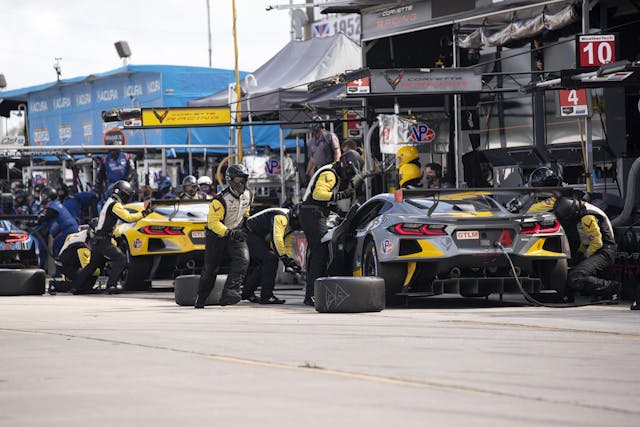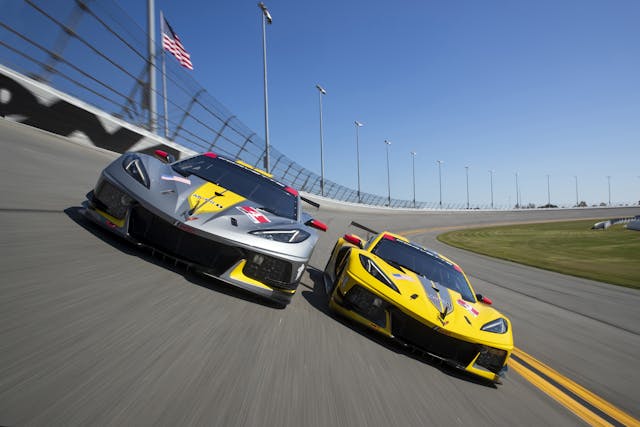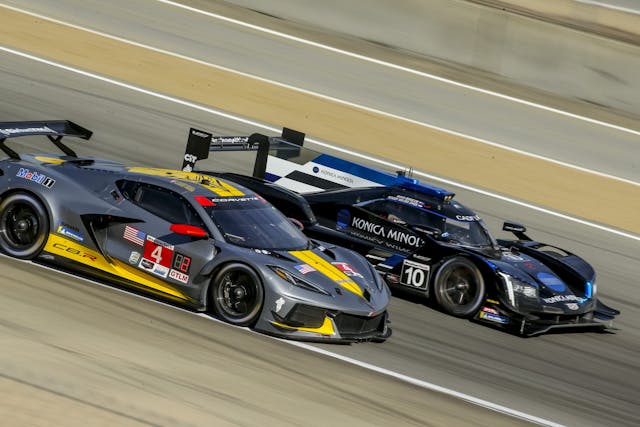Corvette faces an uncertain future in road racing amid a shifting landscape
Earlier this week, GM appointed Laura Wontrop Klauser as head of Chevrolet’s sports car racing endeavors. As program manager, she will oversee GM’s involvement in North American road racing, focussing largely on the premier series this side of the Atlantic, the WeatherTech Sports Car Championship. Bowtie faithful, breathe easy; amid the flurry of interviews, Klauser has made it apparent that Corvette’ Racing’s participation in big-money road racing is not a question of “if” but “where.”
The WeatherTech Sports Car Series, in which Corvette currently campaigns, is in a bit of a transition phase. Sanctioned by the International Motor Sport Association (IMSA), the series is split up into five different classes. Each class produces a respective winner for each race, and at the end of the year, a respective champion. This will all change in 2022.
As it is, five classes make it tough for casual fans to follow along. Some classes vary only marginally in their rules, and explaining the difference between a GT Le Mans (where Corvettes compete) and GT Daytona (where Corvettes don’t compete) can be confusing. Oh, and don’t forget international series like the World Endurance Championship, where similar cars campaign under a different set of rules. Want to talk about Corvette’s dominance? First, please clarify which series, which class, and which team.

Luckily, IMSA identified these problems. In January of 2020, it took a step in the right direction, announcing a new shared class between IMSA and the Automobile Club de l’Ouest (ACO), France’s big-time sanctioning body and the outfit that coordinates road racing’s most prestigious contest, the 24 Hours of Le Mans. This class, titled “Le Mans Daytona h” (LMDh), will replace IMSA’s outgoing prototype class in 2022 and be eligible for competition overseas in the World Endurance Championship.
Car count, or lack thereof, has been another hot issue. This year’s Rolex 24 at Daytona, IMSA’s crown-jewel, will feature 50 cars. While this is a bounce back from last year’s roster of 38, due to the fractured field multiple classes will still feature fewer than ten cars. Example: the GT Le Mans (GTLM) class, which has experienced a mass exodus of factory-backed cars since the Ford GT program left town, only has three cars prepared to run a full-season slate. Two of them are Corvettes.

“We definitely would love to have as many competitors with us as possible; that’s a given,” Klauser said in an interview with Sportscar365 earlier this week. “But the good news is that even when we have lower car counts we’re still learning.” Also, everyone gets a podium!
Another step in the right direction, only possessing legs in the depths of road racing message boards, would be a unified GT class. This would require big-time moves, or only a few more teams to leave GTLM, which could be sooner than later depending on GM’s road racing plans.

For the 2021 WeatherTech Sports Car season, GM will field multiple entries in two classes; three teams campaigning Cadillac-powered prototypes, and one team with a pair of race-going C8.R Corvettes. For 2022, things look less certain. “For sure we need to have Corvette on the grid somewhere, but understanding what capacity that’s going to be, that’s been part of figuring things out,” Klauser told Sportscar365.
Klauser and her team could elect to field a Corvette or Cadillac in the new LMDh class. Or, perhaps a Pratt & Miller developed GT3-spec Corvette could find its way into the World Endurance Championship as well. Who knows? GM’s throwing around a lot of “maybes” and other vague verbiage. One thing we do know: some version of the Plastic Fantastic will race in 2022. We wait with bated breath.


